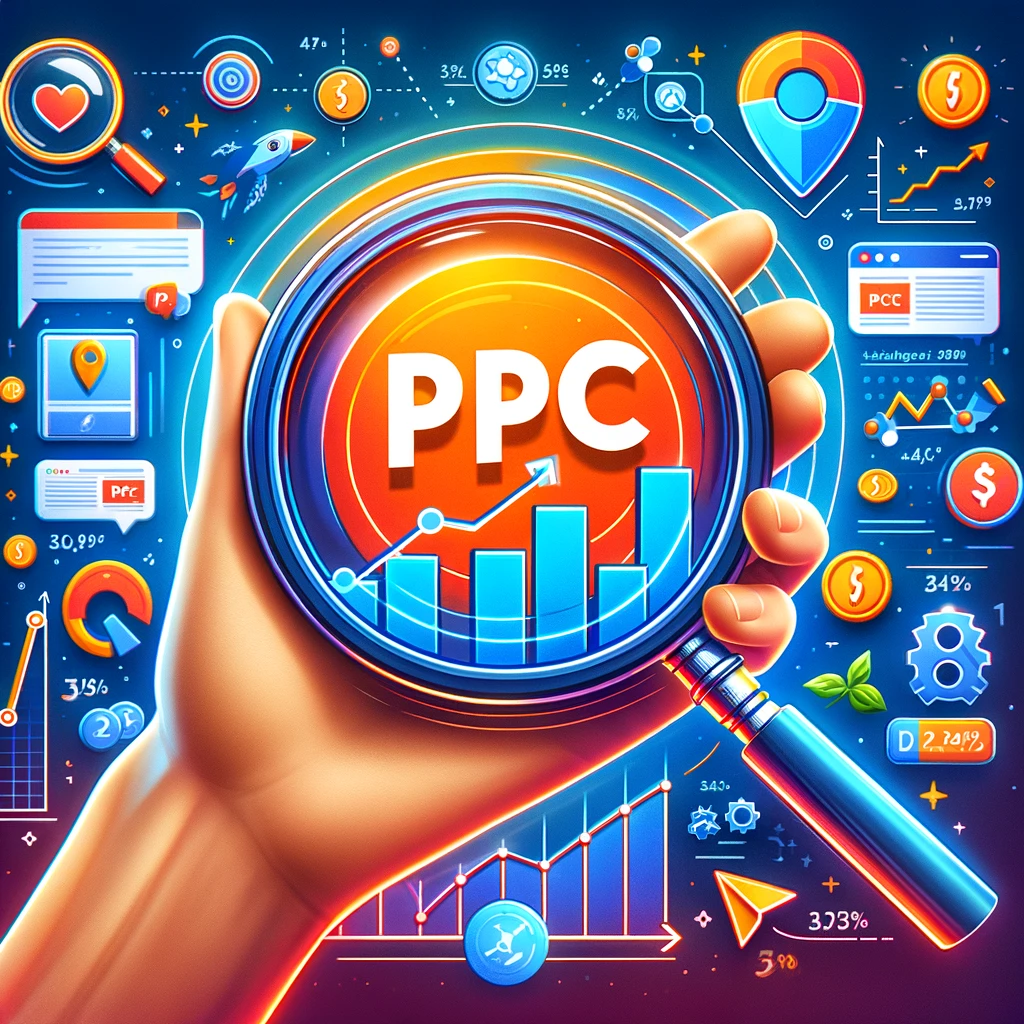Pay Per Click Ads For Branding
In the digital marketing world, Pay-per-click (PPC) advertising offers businesses a powerful way to get their brand in front of new audiences. With PPC, advertisers create ads that are shown to potential customers and the advertiser only pays when someone clicks on the ad.
This cost-per-click model provides flexibility that other digital advertising options lack. Businesses of any size can set daily budgets that work for their marketing goals and cash flow. They can also target ads to specific regions, demographics, interests, and keywords to ensure ads reach the right people.
Beyond driving traffic, PPC is highly effective at raising brand awareness over time. When setting up campaigns, take care to craft messaging that introduces your brand and what you offer compellingly. The goal is to pique people’s curiosity so they remember your business even if they don’t convert on the first visit.
Some best practices for using PPC to boost awareness include focusing on brand keywords over specific product terms. Ads with your company or brand name increase familiarity. You can also expand reach through network extensions on social platforms and websites where your target audience spends time.
Cost-per-thousand-impressions (CPM) pricing works especially well for awareness goals. CPM ads prioritize greater reach over click-through rate so more potential customers see your brand for less money spent. Regularly optimize campaigns by evaluating ad copy, keywords, and placements that generate the most brand visibility.
Over time, effective PPC awareness campaigns increase organic search rankings as more people come to associate your brand with the products or services you provide. The improved searchability sustains new momentum from paid to unpaid channels.
With the right strategy and ongoing optimization, PPC offers marketers an invaluable tool for introducing their brand at scale. Even modest budgets can build substantial new awareness that translates into long-term marketing success.
Here are some tips for optimizing PPC campaigns to maximize brand awareness:
- Use your brand name/keywords rather than specific product terms. Focus on getting eyes on your brand over immediate sales.
- Target broad, contextual keywords related to your industry are highly competitive commercial keywords.
- Optimize for cost-per-thousand-impressions (CPM) over cost-per-click to reach larger audiences.
- Run campaigns across multiple platforms like Google, YouTube, Bing, and social networks. Wider distribution boosts awareness.
- Geotarget ads to important markets/regions to establish hyperlocal brand recognition.
- Test different ad formats like image/video ads for increased visibility versus text ads.
- Prioritize impression share goals over click-through rate to optimize for exposure vs conversions.
- Use dynamic search ads to automatically generate and run ads based on keywords/topics of pages visited.
- Analyze audience demographics reached to refine the targeting of the right profiles over time.
- Add social sharing/like buttons to ads to encourage organic promotional reach.
- Integrate retargeting to keep exposing the brand to those who visit your site.
- Monitor ad placement quality to ensure high contextual relevance for clicks.
- Analyze the performance of individual ads/keywords/placements regularly to optimize visibility.
The key is focusing on brand messaging, maximum exposure across channels, and continuous testing/optimization to raise your profile over the long run.
Here are some tips for analyzing audience demographics and better targeting in PPC campaigns:
- Under each campaign, Google Ads allows you to see details on the age, and gender breakdown of those reached. This helps understand who is seeing your ads currently.
- You can also view location data to see which cities/regions are most engaged. This provides insights into where to focus or expand geographically.
- Google’s Audience insights tool provides a detailed look at the interests and attributes of users matching your targeting criteria. This helps refine targeting for improved relevance.
- Tools like Google Tag Manager or Facebook Pixel deployed on your site allow tracking of on-site behaviors and retargeting audiences with shared traits like browse patterns.
- Periodically analyze click/conversion data to identify highest performing demographic subsets like age/gender/location combinations.
- Consider using first-party user data from your site/app to build custom affinity audiences based on known traits in your user base.
- Gradually optimize targeting away from broad generic interests towards more specific behavior/lifestyle affinity segments.
- A/B test campaigns reach different subsets to see which drives better awareness metrics like views, shares, and time spent.
- Consult industry reports on your target customer profiles to further shape ideal demographics definition over time.
The goal is to gain insights that allow narrowly focusing campaigns on people most likely to care about your brand vs generic populations.
Here are some examples of specific behavior/lifestyle affinity segments you could target in PPC campaigns:
- Families with young children – target parents of infants/toddlers
- Outdoor enthusiasts – target people interested in hiking, camping, hunting, fishing
- Home improvement enthusiasts – target DIY-ers, people interested in remodeling, decorating
- Tech-savvy professionals – target people interested in computers, gadgets, coding
- Health-conscious individuals – target people interested in fitness, nutrition, wellness
- Foodies – target people interested in cooking shows, recipes, dining out
- Arts/culture lovers – target people interested in museums, art, live music, theater
- Travel enthusiasts – target people interested in specific destinations, airlines, hotels
- Vehicle owners – target by make/model of car owned
- Pet owners – target by type of pet owned like dogs, cats, birds
- Sports fans – target my favorite team/league across various sports
Getting this granular about interests, hobbies, and passions allows your ads to reach narrow affinities that are highly engaged with your type of brand or products. It leads to better awareness versus generic or broad targeting.
Here are some additional examples of specific behavior/lifestyle affinity segments you could target in PPC campaigns:
- Home cooks – target people interested in recipes, cooking shows, chefs
- Gardeners – target people interested in landscaping, gardening, plants
- Bookworms – target people interested in book genres, authors, libraries
- Music aficionados – targeted by music genres like rock, pop, country, classical
- Social media enthusiasts – target heavy social media platform users
- Tech geeks – targeted by interests like gaming, programming, AI, and virtual reality
- Eco-friendly individuals – target people interested in sustainability, renewable energy
- Personal finance followers – target people interested in investing, retirement planning
- Beauty product fans – target by beauty segments like makeup, skincare, hair
- Crafting/DIY enthusiasts – target by hobbies like knitting, woodworking, sewing
- Home decorators – target by interests in interior design, furnishings, styles
- Wine connoisseurs – targeted by wine regions, varietals, and winery visits
- Car enthusiasts – target by makes, models, auto shows, customizations
- Movie buffs – targeted by favorite directors, genres, film festivals
Getting hyper-specific like this with interests, hobbies and passions will help your ads reach narrowed audiences highly engaged with your brand vs broad generic categories.
Here are some key metrics to measure the success of PPC campaigns targeting specific behavior/lifestyle affinity segments:
- Impressions and impression share – Did your ads reach the intended audiences at scale?
- Click-through rate – Which segments are most engaged and worth retargeting?
- Cost per thousand impressions – Which segments provide lowest CPM for brand exposure?
- New and repeat visitors to your site – Are affinity ads driving fresh traffic over time?
- Time on site – Do certain segments dwell longer, signaling interest in your brand?
- Page views per session – Are certain segments exploring your site more deeply?
- Conversion rates – Do any segments convert better (signups, purchases, etc)?
- Cost per acquisition – Which segments provide lowest CPA, making the spends most effective?
- Brand awareness surveys – Pre and post campaign, do targeted segments recall your brand more?
- Social sharing of ads – Do certain segments promote your brand messages organically?
Regularly analyze segmented performance to drop underperforming ones and optimize high potential segments over time. This will continually improve awareness returns on your PPC investment in affinity audiences.
Contact Pay Per Click Houston Today
Take the first step towards transforming your digital marketing strategy by reaching out to Pay Per Click Houston. Whether you’re looking to enhance your Google Ads performance, generate more leads, or create a robust online presence, their team is ready to help your business soar. Contact them at (832) 380-4584 or visit http://payperclickhouston.com/contact for a free consultation.







